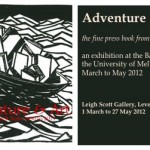
The latest NGV exhibition is, again, sourced largely from a secondary French museum (the Musée Marmottan Monet, henceforth MMM). Monet exhibitions have traditionally draw large crowds, and are much loved by gallery directors needing to feed the political machines to which they are beholden that equate numbers with success. But if ‘Monet’ is the brand of brands for art exhibitions, for organisers there is the problem of finding new ways to give a Monet show intellectual credibility and thematic coherence, while marketeers may feel the need to enrich a brand that runs the risk of becoming stale. And, given the economics of international exhibitions in Australia, the bulk of the works need to come from a single source. Hence Monet’s Garden.
‘Monet’s Garden’ is an idea rich in possibilities: it connects cultural tourism (a trip to Giverny) with high-art glorification of artistic genius. While previous NGV exhibitions have emphasised, through videos, places associated with the objects on display (notably the Musée Moreau in the Moreau exhibition and Malmaison with Napoleon), Monet’s Garden takes the place/artwork nexus one step further. I once taught a subject in art history on the history of gardens called Visions of Paradise: Art of the Garden, a title stolen from a picture book by Marina Schinz, and did a week on Monet and Giverny. One of the essay questions was whether Monet was a better gardener than painter. This generated some interesting responses. By asking this question one is forced to look at his Giverny paintings differently: as topographical painting, subordinate to the place represented, rather than a this-is-a-work-of-genius painting. It is quite intriguing, after studying the now well-known colour photos of Monet in his garden nearest the house (e.g. pp. xxiv-xxv of the catalogue) (Fig. 1), to be able to identity what the paintings actually represent. The strength of Impressionism was that it accepted the facts and went from there, so that its underpinning of visual factuality is there if you choose to look. A visit to the waterlily pond at Giverny makes you realise that his Nymphéas paintings are much more realistic than you had thought when you saw them in a gallery (Figs. 3, 14). This helps us to see Monet differently: as the last of the estate topographers, rather than as a wannabee modernist abstractionist.
Read more →















